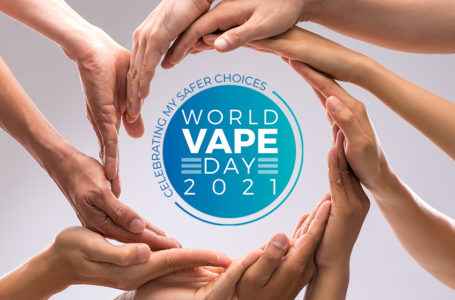Leading medical organizations in the Philippines consider e-cigarettes as potentially harmful and do not recommend them as smoking cessation aids. This position is consistent with the World Health Organization’s (WHO) “quit or die” approach—that smokers only have two choices and there is nothing in between—and the global body’s opposition to tobacco harm reduction.
The Philippine Medical Association (PMA) is the umbrella organization of physicians in the country. Together with various medical associations, PMA has called on the government to impose a total ban on the manufacture and sale of e-cigarettes in the country. The organization claimed that e-cigarettes “deliver unwanted chemicals into the body and could cause cancer and other deadly diseases.” PMA warned that “e-cigarettes are now flooding the market and even sold by sidewalk vendors…”1
The Philippine College of Chest Physicians (PCCP) contends that there is limited evidence to show the safety of e-cigarettes as a smoking cessation aid, especially its long-term health effects with continued use. PCCP is the specialty organization of Filipino pulmonologists and acknowledged authority in pulmonary medicine in the Philippines.
According to PCCP, there is no sufficient evidence to support the efficacy of e-cigarettes as an acceptable form of nicotine replacement therapy (NRT) for smoking cessation. “E-cigarettes may promote nicotine addiction and [are] unlikely to aid in smoking cessation particularly among the youth. The use of e-cigarettes is not recommended as an alternative NRT.” The organization also noted that e-cigarettes are not approved as a smoking cessation aid by the Philippine Food and Drug Administration (FDA).2
THR strategy

Worth noting is that none of the local medical organizations’ official statements on e-cigarettes and heated tobacco products ever mention tobacco harm reduction (THR) as part of a comprehensive tobacco control program. This could either be a deliberate omission or the organizations simply do not know or understand THR.
THR aims to provide less harmful alternatives to reduce harms caused by smoking and to provide nicotine to people who cannot or do not want to quit smoking by themselves or with currently-approved methods. It encompasses a range of pragmatic policies, regulations, and actions that either reduce health risks by providing less harmful forms of products or substances or encourage less risky behaviors.
THR does not focus exclusively on the eradication of products or behaviors. By making less harmful nicotine products available, THR offers new choices to millions of people worldwide who want to switch away from smoking, but have been unable to with the options previously available.4 E-cigarettes and heated tobacco products are forms of THR.
Other examples of harm reduction strategies that have been implemented successfully include promoting condom use, seat belt legislation and programs promoting safe participation in sports such as bike helmets and life vests for boating, among others. Switching to smoke-free alternatives such as e-cigarettes and heated tobacco products is another example of harm reduction—specifically tobacco harm reduction. The basic premise of harm reduction applies for all of these approaches—that there are inherent risks involved with any behavior, and there are interventions that, when followed appropriately, reduce these risks for those who choose to engage in the behaviors.3
Doctors as THR advocates
The UK National Health Service (NHS) has adopted THR, specifically the use of e-cigarettes or vaping, as part of their smoking cessation program.5 This decision was based on an independent review by Public Health England (PHE), which concluded that e-cigarettes are around 95% less harmful to health than tobacco and have the potential to help smokers quit smoking.6

As respected medical experts and credible sources of health information, doctors play an important role in helping people quit smoking. They can provide convincing advice for patients to quit smoking, offer brief counseling, prescribe smoking cessation medications, connect them to additional quit smoking resources, and follow up with continued support to help prevent relapse.7 In the case of the UK, doctors are now recommending e-cigarettes as a smoking cessation aid.
According to the latest PHE evidence update published in February 2021, using a vaping product is the most popular aid used by people trying to quit smoking in the UK. In 2020, 27.2% of people used a vaping product in a quit attempt in the previous 12 months.
This compares with 15.5% who used nicotine replacement therapy (NRT) over the counter or on prescription (2.7%), and 4.4% who used varenicline. In 2017 alone, over 50,000 smokers in the UK stopped smoking with a vaping product who would otherwise have carried on smoking. The PHE noted that extensive use of vaping products in quit attempts compared with licensed medication suggests vaping products may reach more people who smoke and so have more impact than NRT and varenicline.8
Department of Health (DOH) data show that almost 88,000 Filipinos die from smoking-related diseases every year. Healthcare expenditures and lost income due to smoking-related sickness and premature death cost the country P188 billion (US$4 billion) yearly. These figures only cover four of more than 40 smoking-related diseases namely lung cancer, chronic obstructive pulmonary disease (COPD), heart disease and stroke.9 There are currently 16 million Filipino adult smokers. Unfortunately, the Philippines has a very low 4% smoking cessation rate.10

The most recent DOH data show that there were 40,775 medical doctors (in the health sector) in the Philippines in 2017.11 It might be a good time for Filipino doctors to consider what their counterparts in the NHS have been doing and reflect on the merits of THR.
CLARISSE YVETTE P. VIRGINO is the Philippine representative of CAPHRA (Coalition of Asia-Pacific Tobacco Harm Reduction Advocates), which aims to educate, advocate, and represent the right of adult alternative nicotine consumers. She was able to quit smoking by switching to vaping. She is a consumer advocate for tobacco harm reduction, a health writer, and a law student.
References:
- https://www.med.or.jp/english/journal/pdf/2013_05/392_393.pdf
- http://philchest.org/xp/wp-content/uploads/2020/07/CPG-TOHAP-Final-3.6.2018-for-printing-LLM.pdf
- https://www.ncbi.nlm.nih.gov/pmc/articles/PMC2528824/
- https://fds.org.au/FlippingBooks/THR/files/assets/common/downloads/THR_and_the_right_to_health.pdf?uni=6c7a3f80956f697de4bae64e9e6f1bf1
- https://www.nhs.uk/live-well/quit-smoking/using-e-cigarettes-to-stop-smoking/?tabname=advice-and-support
- https://www.gov.uk/government/news/e-cigarettes-around-95-less-harmful-than-tobacco-estimates-landmark-review
- https://www.cdc.gov/tobacco/data_statistics/sgr/2020-smoking-cessation/fact-sheets/healthcare-professionals-health-systems/index.html#:~:text=Healthcare%20professionals%20can%20help%20patients,Prescribing%20cessation%20medications
- https://assets.publishing.service.gov.uk/government/uploads/system/uploads/attachment_data/file/962221/Vaping_in_England_evidence_update_February_2021.pdf
- https://doh.gov.ph/Tobacco-Control-Key-facts-and-Figures
- https://www.who.int/tobacco/surveillance/survey/gats/phl_country_report.pdf?ua=1
- https://www.bworldonline.com/need-to-increase-supply-of-medical-workers-and-build-telemedicine-infrastructure-to-prepare-for-future-public-health-crises/




















1 Comment
[…] Related: It is time for PH medical groups to reconsider stance on e-cigs […]